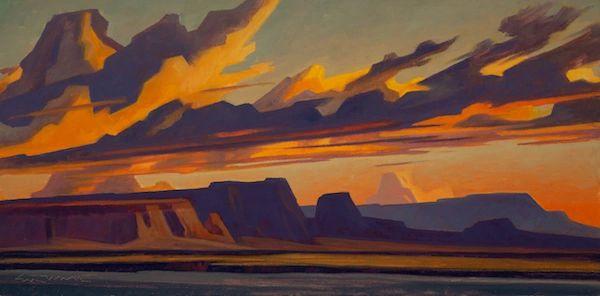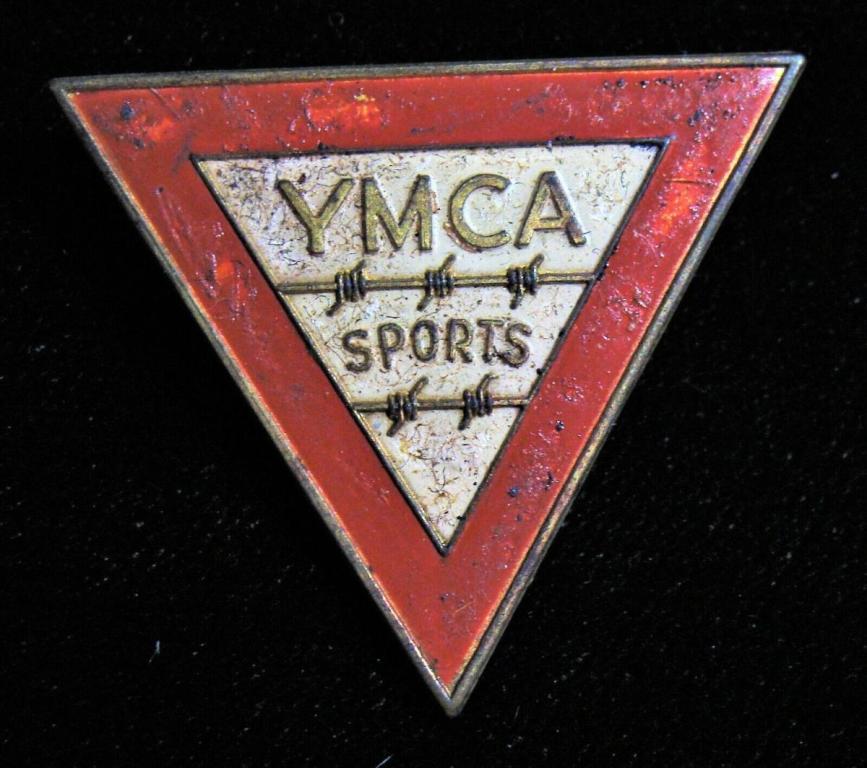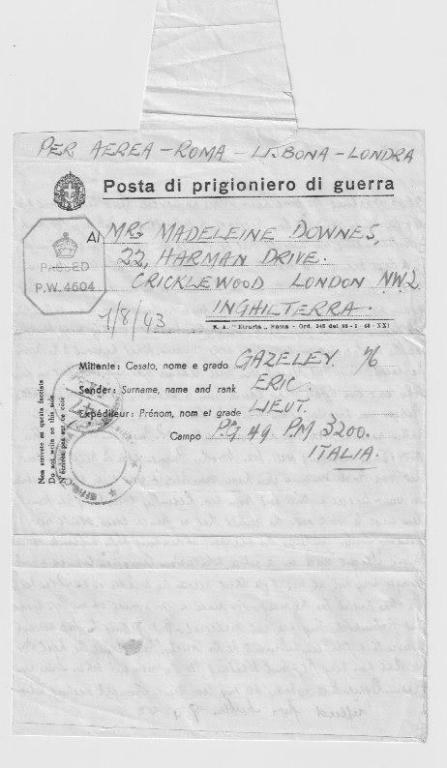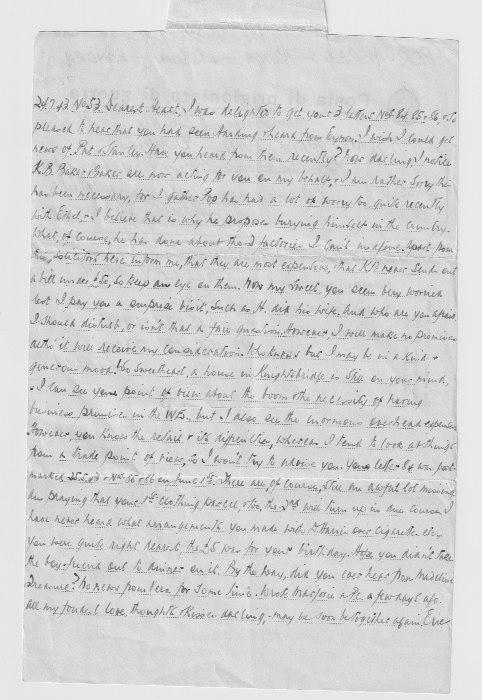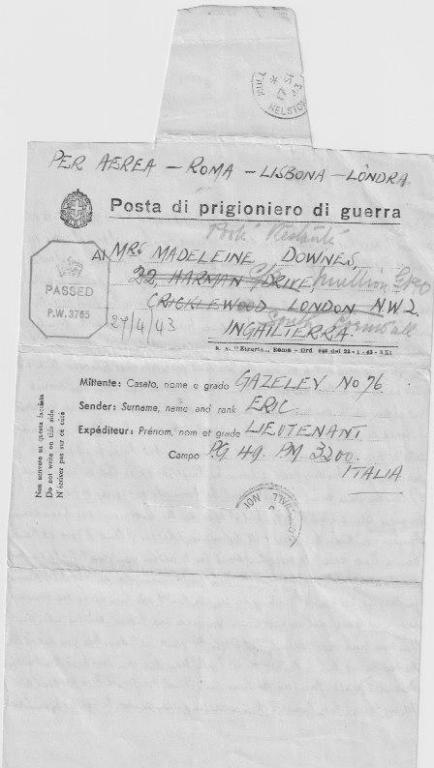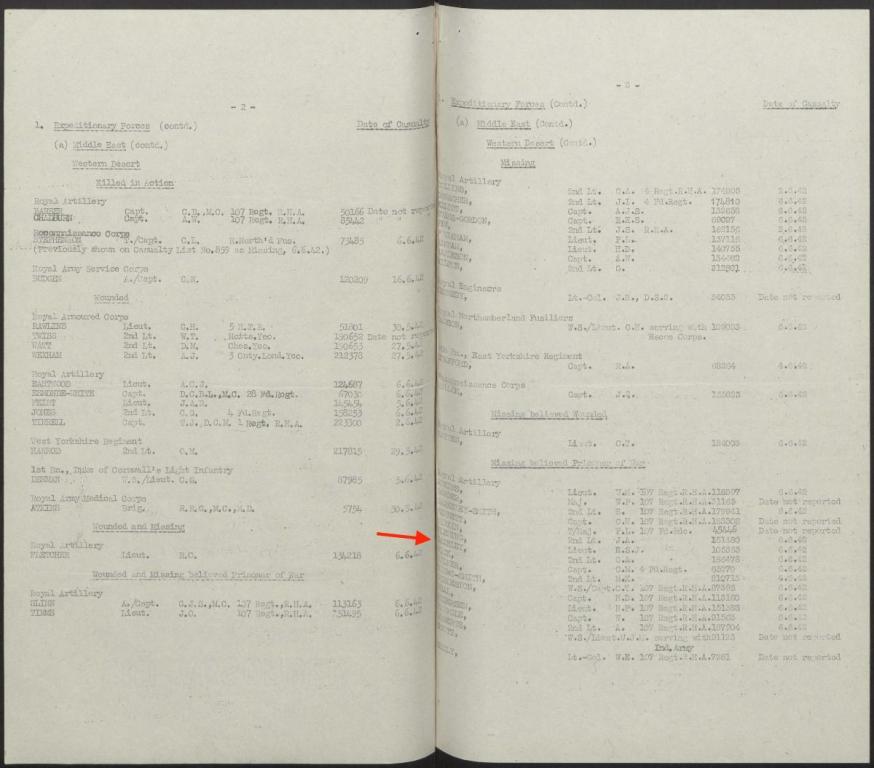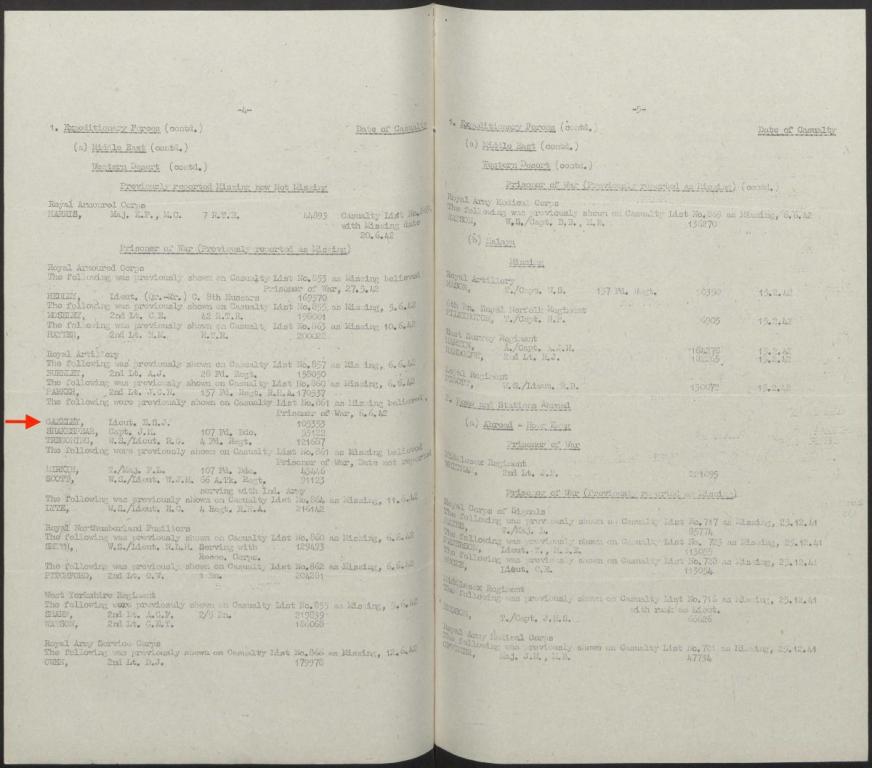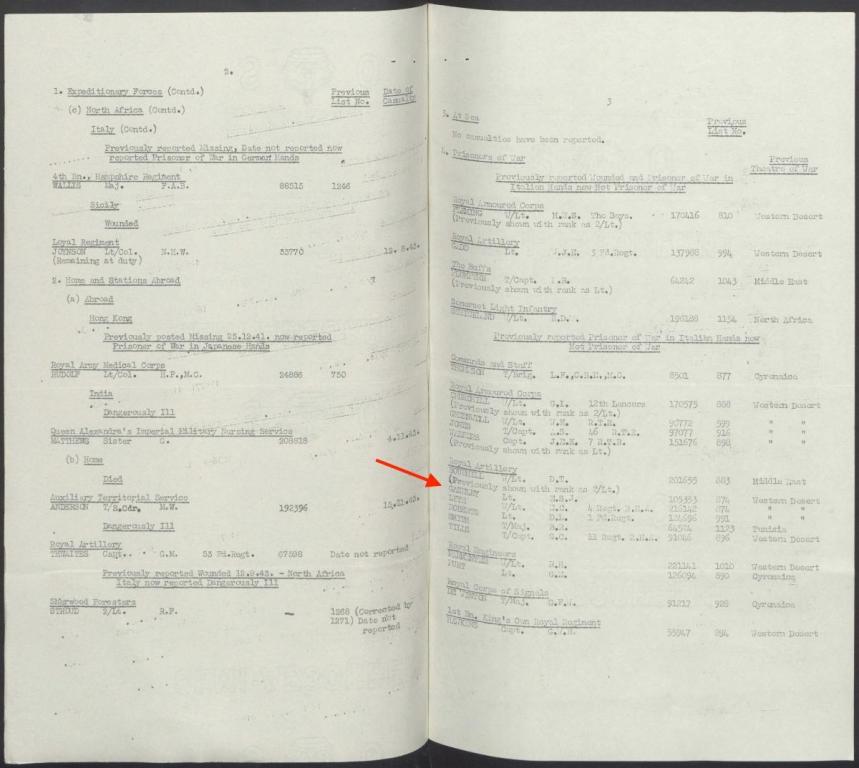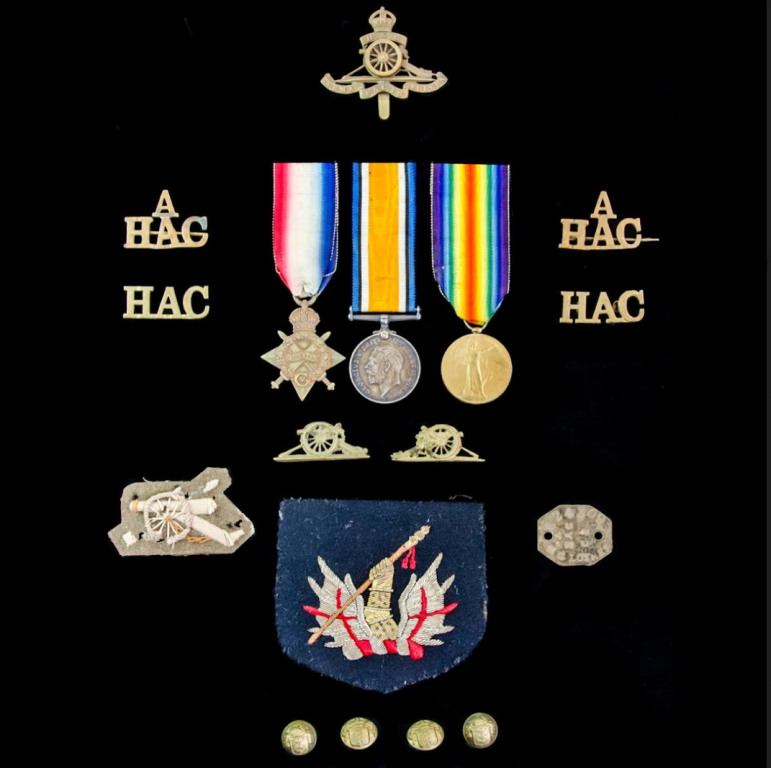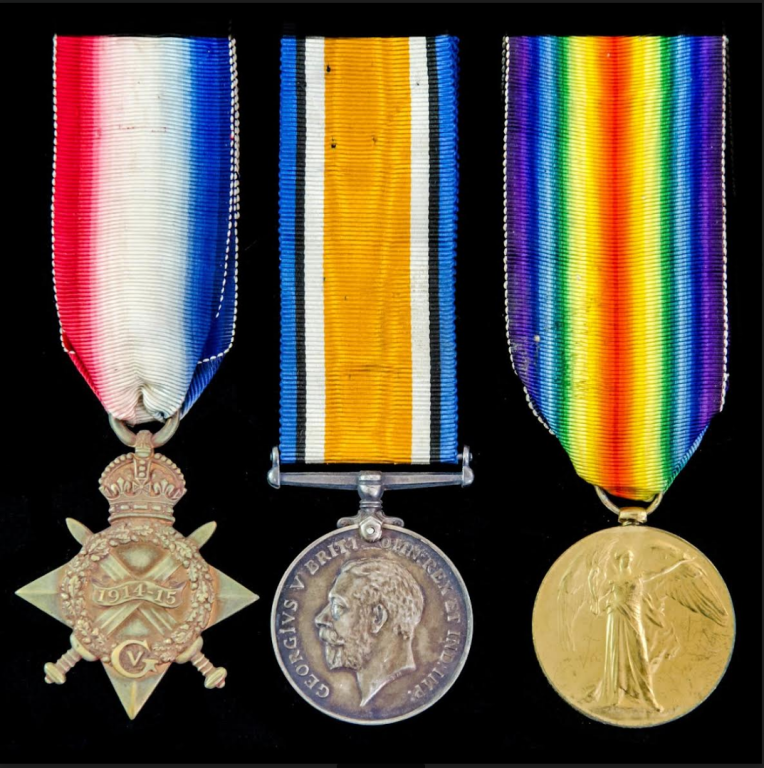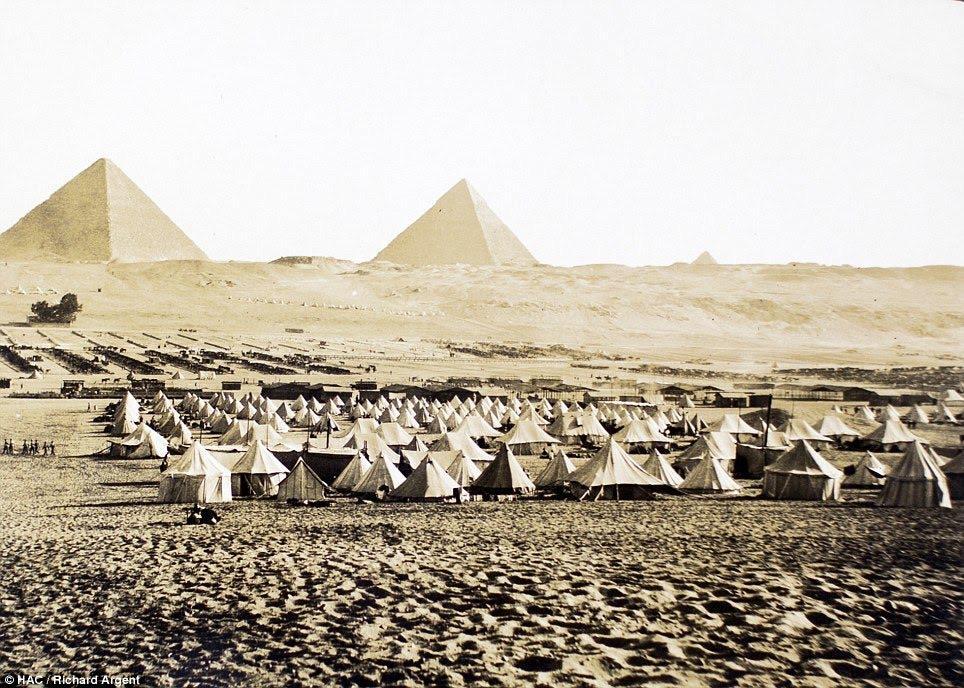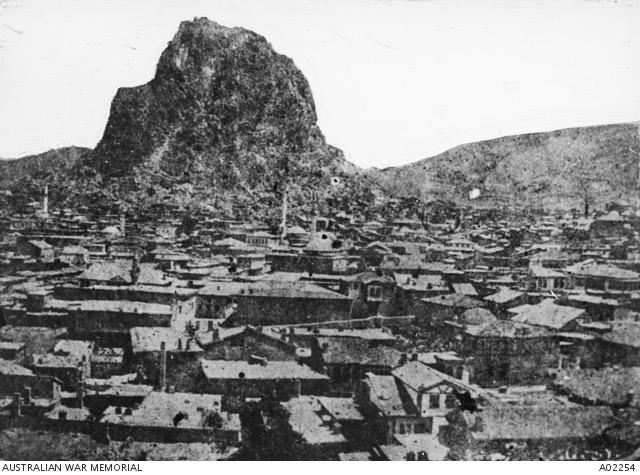-
Posts
1,801 -
Joined
-
Last visited
-
Days Won
10
Content Type
Profiles
Forums
Blogs
Gallery
Events
Store
Everything posted by azyeoman
-
In 45 years of collecting, I've only seen one of these. It is obviously a YMSA PoW badge and a very rare at that, but it raises a lot of questions. Who wore it? Which war was it worn in? Was it worn by YMCA staff or volunteers or by PoWs themselves? The dealer description was: "VINTAGE WWII BRITISH POW PRISONER OF WAR YMCA SPORTS AWARD BADGE. A VERY RARE ORIGINAL WW2 PRISONER OF WAR YMCA SPORTS AWARD BADGE BY SPORRONG & CO, STOKHOLM. THE BADGE IS MADE OF GILT METAL WITH A RED & WHITE PAINTED FINISH ,THE FRONT HAS "YMCA SPORTS" WHICH IS BETWEEN TWO STRANDS OF BARBED WIRE , THE REAR HAS A GOOD WORKING PIN FITMENT WITH THE MAKERS NAME ON THE DISC HOLDING THE PIN , OTHER THAN SOME LIGHT WEAR TO THE RED PAINTED FINISH ITS IN VERY GOOD CONDITION WITH NO DAMAGE 1& 1.2 INCHES TALL THIS IS A VERY VERY HARD BADGE TO FIND." It is indeed a very rare badge, but research indicates nothing to verify the description and there is absolutely no proof that it was an "award badge". Why would the Germans allow badges to be awarded for sports events, and particularly when it is a pinback badge, and it's possible the pin could be used for other reasons than just attaching the badge to the clothes of the PoW. If it is British, which it very well might be, then why was it made by an exceptionally well-known Swedish company, Sporrong & Co. in Stockholm? If it is an American or Canadian badge, then again why was it made in Stockholm? The YMCA has a very long and exceptional history of working to support soldiers and PoWs during both world wars and in their respective postwar eras too. Much information can be found online, but I've yet to come across any references to this badge to verify what's in the description.
-
This is a fabulous thread with some most interesting portraits, and exceptionally beautiful decorations. I hope some people will continue to post new portraits and medals. Thank you.
-
What a magnificent and stunning decoration!
-
Although not a medal group, this pair of letters written by a PoW from Campo P.G. 49 and an escapee from Campo P.G. 78 in Sulmona is most interesting. Acquiring the letters opened up a lot of questions about Lt. and Later Capt. Eric Sydney James Gazeley. The internet was a great way to find out more about him personally and professionally. Reading the letters, you can feel the frustration that Gazeley must have had regarding his "affair", Madeleine's fidelity, family and financial issues; all of which he must have felt helpless to do much about due to his capture and incarceration. The numbering of the letters and the missing and late letters are consistent with all other accounts by PoWs. How frustrating it must have been to wait for letters and parcels from home. The uncomfortableness of the heat and mosquitoes in Italy are also brought out in one of the letters. All in all, a poignant and emotive view of PoW life via the microscopic perspectives of two love letters. First the letters and then the biographical information. Two PoW Letters from Lt. Eric Sydney James Gazeley Postmarked 17 Sept. 1943 Mullion, Helston, Cornwall Obverse Per Aerea – Roma – Lisbona – Londra Posta di prigioniero di guerra Passed P.W. 3765 Censor Addressed to Mrs Madeleine Downes , 22 Harman Drive, Cricklewood, London NW2 Inghilterra Penciled in Poste Restoante C/O Mullion GPO, South Cornwall Return Address Gazeley No. 76 Eric Leiutenant PG 49 PM 3200 Italia Date in different ink and with French handwriting/numerals 27/4/43 24/7/43 No. 53. Dearest Heart. I was delighted to get your 3 letters Nos 84.85 & 86. & so pleased to hear that you had seen Harding & heard from Eynon (sic). I wish I could get news of Pat Stanley. Have you heard from them recently? Now darling, I notice K.B. Baker & Baker are now acting for you on my behalf. I am rather sorry this has been necessary for I gather Pop has had a lot of worry too, quite recently with Ethel & I believe that is why he proposes burying himself in the country. What of course, he has done about the 2 factories I can’t imagine. Apart from this, solicitors here inform me, that they are most expensive, that K.Po never sent out a bill under L50, so keep an eye on them.. Now my sweet, you seem very worried lest I pay you a surprise visit; such as H did his wife. And who are you afraid I should distrust or isn’t that a fair question. However, I will make no promises altho’ it will receive my consideration. Who knows but I may be in a kind & generous mood. So, sweetheart, a house in Kinightsbridge is still on your mind, & I can see your point of view about the boom & the necessity of having business premises in the WE, but I also see the enormous overhead expenses. However, you know the resail (sic) & its difficulties, whereas I tend to look at things from a linde (sic) point of view, so I won’t try to advise you. Your letter 84 was post marked 25.5.43 & No. 85 & 86 on June 1st. There are of course, still an awful lot of missing ones praying that your 1st clothing parcel, Too, the 2nd will turn up in due course. I have never heard what arrangements you made with D Harris over cigarettes etc. You were quite right dearest, the L5 was for your birthday. Hope you didn’t take a boyfriend out to dinner on it. By the way, did you ever hear from Madeline Jremoure? (sic) No news from Vern for some times. Wrote Marjorie etc. a few days ago. All my fondest love, thoughts and kisses and Ling (sic) maybe soon be together again, Eric Letter from Lt. Eric Gazeley Obverse Per Aerea – Roma – Lisbona – Londra Posta di prigioniero de Guerra Passed P.W. 4604 Censor Addressed to: Mrs Madeleine Downes, 22 Harman Drive, Cricklewood, London NW2 Return Address Gazeley No. 76 Eric Lieut. PG 49 PM 3200 Italia Date in different ink with French handwriting/numerals 7/8/43 51 7.8.43 Darling, No more news. Still no parcel. Your last letters were 88 & 92. This is No. 52. Today received a letter of June 20th from Pop and notwithstanding my appeals that he should see you to discuss things in a same manner he maintains that grossly insulting letters from you make it impossible. Can this be true? I hope it is an exaggeration. But again, no money is mentioned, so I know nothing more, than of the L112. It seems that he has had a lot of trouble with E. They were breaking up the partnership in every way after 18 years. What happens to the factory he doesn’t say. But dearest, you will realize that I worry, lest in any way, our own affair may cause him a serious breakdown in health. Perhaps you will say I am being too sentimental, but I think it is rather natural. Now, how are you sweetheart? Business I hope is since good. Erica behaving well. Was Dorothy Barnes able to help you over her food, for I presume you have seen her, if you were able to enclose in your parcel a pull-over from her. Recently everybody has found less urge to work the result that no French class exists now. However, I still continue tho’ and spot of reading with advance at Hugo’s Idioms once in a while, which Ian Craig has loaned me. IT is now very hot at night & a sheet across the middle is all I can beat. The other night too, the mosquitoes made a good meal of my left eyelid, but fortunately they are not malarial. But getting to sleep always presents a problem – I must be too lonely! Why blame the heat, for all that am very git; - just waiting for the moment when I see you again. Regards to everybody. All my love Kisses thoughts, darling Eric Below in a different ink and handwriting is written “replied for hurlens (sic) 8.9.43” Eric Sydney James Gazeley was born on 5 May 1910. He was the son of Sidney C. Gazeley (26) and Charlotte Gazeley (26). His father was a fur buyer and worker in a drapery store. He had one sister Marion Eileen was three years older according to the 1911 census, and his 22-year-old sister-in-law Sarah Ann Jones who also was a worker in the drapery store lived with them in Fulham, London. Their address was 12 Melville Rd. Barnes, SW. He married Gladys C Brown in Pancras when he was 19 years old in 1929. Gazeley joined the Royal Artillery as a 2nd Lieutenant on 22 October 1939. He was captured on 6 June 1942, most likely during the Battle of Gazala where Rommel defeated the British 8th Army and ultimately took Tobruk. He was missing and believed to be a PoW on 6 June 1942 in N. Africa and later officially classified a PoW on 13 August 1942. He was in Campo P.G. 49 from where the two letters were sent. Official British records show that he was also in Campo P.G. 78 in Sulmona, and escaped on 9 December 1943. On 10 September 1943, the Italian guards at Campo PG 78 simply left and over 1,000 PoWs escaped into the mountains. Many were captured, but others held on, joined partisan groups, were helped by Italian farmers to escape. Some went towards Switzerland while others went south towards the allied lines. Gazeley made the “Home Run”. It would seem that his escape official escape date is that of the day he made it to Allied lines rather than the actually date he ran from Campo PG 78. After his escape, Gazeley served in the 4th Field Regiment, Royal Artillery again and was temporarily promoted to Captain on 20 October 1944. For more information on Campo P.G. 78 please click on links below and in particular the Youtube post on the PoW Escape from Campo 78, Sulmona. https://www.anzacpow.com/part_1__missing_in_action,_believed_pow/chapter_5__italian_prison_camps/a._pg78__salmona https://wartimememoriesproject.com/ww2/pow/powcamp.php?pid=3502 http://gcjonline.co.uk/Campo 78.htm Post war, Gazeley demobed and by 23 March 1946 was 35 years old and living at 3 Kenilworth Court, Twickenham, Middlesex. He was Assistant for J H & Company traveling first class on the SS Jonathan Holt, a 2,166-ton passenger liner built in 1943 by Cammel Laird & Co. in Birkenhead. traveling from Liverpool to Port Harcourt, Lagos in Nigeria, West Africa. Two years later, he was an agent for the J H & Co traveling back to Lagos, again on the SS Jonathan Holt. The last reference regarding Eric Sidney James Gazeley is that he retired as a Shipping Agent who lived at 5 Pixham Firs, Pixham Lane, Dorking, Surrey and died on 7 January 1986. He was survived by his widow, Nora Mary Gazeley who was born in 1908, also lived in Dorking and died on 28 August 2001. Gazeley obviously went on from Madeleine as well as his captivity to live a long and hopefully happy life.
-
Wonderful collection. Congratulations and thank you for posting. Could you post close ups of the obverses and reverses please?
-
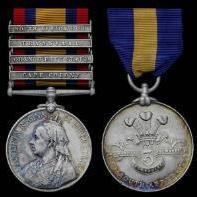
My Prisoner of War Collection
azyeoman replied to POWCollector's topic in Great Britain: Orders, Gallantry, Campaign Medals
What a great addition to your collection and thank you for the excellent write up! Do you know why he was MiD in Palestine? Cheers, John -

Operation PITTING Clasp
azyeoman replied to Zulu_00's topic in Great Britain: Orders, Gallantry, Campaign Medals
I was just wondering as I’ve yet to see one with more than one clasp. Thanks. -

Operation PITTING Clasp
azyeoman replied to Zulu_00's topic in Great Britain: Orders, Gallantry, Campaign Medals
What percentage of Afghanistan medals have multiple clasps? -
QSA (6) Cape Colony, Paardeberg, Johannesburg, Diamond Hill, Wittebergen, South Africa 1901 (3007. Pte: G. Scott. 9/Lcrs.), (unofficial rivets and suspension re-affixed) George Scott was born at Brampton, Cumberland in 1871 and was a farmer upon joining the 9th Lancers at Manchester on 24 June 1890. He had already served a while in South Africa, before returning to serve there during the Boer War from 2 December 1899-26 March 1901. He was discharged in July 1902. He was captured on 22 October 1900 near Phillipolis probably by the Commando commanded by the infamous Gideon J Scheepers who besieged Phillipolis from the 18-24 October 1900. He was released on 24/10/1900 when a relief column of 800-100 men entered the town and released the prisoners. (see link below) https://www.karoobattlefields.com/philippolis At the outbreak WWI, he joined the 4th Battalion, Border Regiment on 27 October 1914 and served at home with No. 349 Company, Royal Defence Corps. He was discharged on 17 February 1919. Later, Scott became a pensioner at the Royal Hospital, Chelsea.
-

British enamel ribbon bars
azyeoman replied to azyeoman's topic in Great Britain: Orders, Gallantry, Campaign Medals
Those are great! I bet the small QSA with “C” is a veteran lapel pen, but what does the “C” mean? It’s the first time I’ve seen that. These are excellent additions to the thread!!! -

British enamel ribbon bars
azyeoman replied to azyeoman's topic in Great Britain: Orders, Gallantry, Campaign Medals
Most interesting! Thank you. Will you be able to post photos of yours? They would be great additions to this thread! Cheers, John -

British enamel ribbon bars
azyeoman replied to azyeoman's topic in Great Britain: Orders, Gallantry, Campaign Medals
Thanks for adding that! It’s a completely different company. I wonder what the “Wilts” indicates? A surname? The regiment? I’d guess the former, but… you never know. Thanks again for posting this! -

British enamel ribbon bars
azyeoman replied to azyeoman's topic in Great Britain: Orders, Gallantry, Campaign Medals
That's a great one. I think it's a QSA as I don't know of any US ribbons that resemble that at all. Was it made by A J Pepper Ltd. too? It makes sense that it's a QSA as the Transport Medal was in the same time period. Thanks for posting! -

British enamel ribbon bars
azyeoman replied to azyeoman's topic in Great Britain: Orders, Gallantry, Campaign Medals
Although not enamel, this is one of the strangest ribbon bars I've ever seen. It's a pin back bronze frame with "Prov.Pat.A.J> P & Co Ld" (A J Pepper & Co.) on the reverse there is a window that has been cut through the metal and had the initials R.E. What's odd is that the ribbon, an British Transport Medal ribbon but behind glass! Has anyone else seen anything like this? -

France French Médaille d'Honneur des Chemins de Fer
azyeoman replied to Michael Johnson's topic in France
Thanks Michael, That’s most interesting. I’ve always found it to be an exceptionally attractive medal, especially with the engine appurtenance on the ribbon. It would be nice ton see a group, but imagine that people on the railways were classified as essential workers and not conscripted. I am particularly fond of the early ones sans like very much that they’re named. Was the naming done at the mint? We’re they awarded in a special ceremony? Thanks, John -

France French Médaille d'Honneur des Chemins de Fer
azyeoman replied to Michael Johnson's topic in France
Do you ever see these in groups rather than individual awards? -
This is a marvelous thread and I hope there is more to come. Thanks everyone for posting.
-
A fantastic and scarce/rare addition to the First World War section of the collection. Although scarce, medals to PoWs from Kut are on the market, but others, such as this one for the “Second Action of Es Salt” are rare and very desirable. Great War Honorable Artillery Company Palestine Second action of Es Salt Casualty and Prisoner of War group 1914-15 Star – 894. Gnr. H.G. Loynes. H.A.C. BWM – 894 Bmbr. H.G. Loynes. H.A.C. – ART. Victory – 894 Bmbr. H.G. Loynes. H.A.C. – ART. Herbert George Loynes came from Norwich, Norfolk, and originally enlisted on 19th April 1914 as a Gunner (No.894 later No.624309) into the Honorable Artillery Company - Artillery. Loynes saw service in Egypt from 13th November 1915 as a member of “I” Troop “A” Horse Battery, and fought in Palestine, being a Bombardier and Acting Sergeant when he was wounded and taken prisoner of war by the Turkish Forces on 1st May 1918 during operations in the Jordan Valley when caught up the in the German counter-attack in the aftermath of his participation in the Es Salt Raid, which is a known at the Second Action of Es Salt or the Second Battle of the Jordan. Acting Sgt. Herbert George Loynes, HAC was interned in Afion KaraHissar. With: Great War period single dog tag, stamped: ‘624309 H.G. LOYNES HAC A CE’ Great War period brass Honorable Artillery Company other ranks cap badge, version with revolving wheel. Pair of Great War period brass ‘HAC-A’ (Honorable Artillery Company - Artillery) shoulder titles. Pair of Great War period brass ‘HAC’ (Honorable Artillery Company) shoulder titles. Pair of Gunner’s sleeve badges. Great War period Gunner’s cloth sleeve badge. Pair of Honorable Artillery Company tunic brass ball buttons. Pair of Honorable Artillery Company tunic brass buttons. Honorable Artillery Company veteran’s blazer badge, wire embroidered form. The Honourable Artillery Company (HAC) was incorporated by royal charter in 1537 by King Henry VII. The HAC regiment is the second-oldest military corps in the world. The word "artillery" in "Honourable Artillery Company" does not have the current meaning that is generally associated with it, but dates from a time when in the English language that word meant any projectile, including for example arrows shot from a bow. The equivalent form of words in modern English would be either "Honourable Infantry Company" or "Honourable Military Company". In World War I, the HAC expanded to three infantry battalions and seven artillery In total 1,650 men from the HAC were killed during the war. A Battery, HAC was posted to Egypt in 1915, served as part of the Western Frontier Force in the Senussi Campaign in 1916 and the the Sinai and Palestine Campaign with the Imperial (later Australian) Mounted Division in 1917 and 1918. Both A and B Batteries were in action at the First and Second Battles of Gaza and entered Jerusalem in December 1917. In the German counter-attack during the Second Action of Es Salt on 1 May 1918, A Battery was forced to make a rapid withdrawal under heavy fire, which resulted in the loss of all its guns. Both A and B Batteries took part in the Battle of Megiddo in September. Specifically, Gnr/Bmbr Herbert George Loynes’ 1/A Battery, HAC, the 1st Line battery was embodied with the London Mounted Brigade on 4 August 1914 at the outbreak of the First World and concentrated in Berkshire. A decision was made to form a new mounted division from the mounted brigades in and around the Churn area of Berkshire. On 2 September 1914, 2nd Mounted Division, with headquarters at Goring, came into being and London Mounted Brigade was assigned to the new division. I and II Brigades, RHA (T.F.) were formed for the division and the battery was assigned to II Brigade, RHA at Churn, along with B Battery HAC, and the Berkshire and Nottinghamshire Batteries RHA. In November 1914, the division moved to Norfolk on coastal defense duties. Artillery headquarters was established at Cromer, before joining the divisional headquarters at Hanworth in December, and A Battery, HAC was at Mundesley. Overseas service In March 1915, the 2nd Mounted Division was put on warning for overseas service. In early April, the division starting leaving Avonmouth and the last elements landed at Alexandria before the end of the month. By the middle of May, the horse artillery batteries were near Ismailia on Suez Canal defenses. Although, the 2nd Mounted Division was dismounted in August 1915 and served at Gallipoli. The artillery batteries and ammunition columns along with the signal troops, mobile veterinary sections, Mounted Brigade Transport and Supply Columns and two of the Field Ambulances were left behind in Egypt. The division returned from Gallipoli in December 1915 and was reformed and remounted. The battery rejoined the division on 13 December, but on 20 December it entrained at Alexandria for the Western Desert, concentrating at Mersa Matruh on 7 January 1916. Thereafter, it served as part of the Western Frontier Force in the Senussi Campaign, and taking part in the Affair at Halazin on 23 January 1916. The battery returned to Alexandria on 6 March and was rearmed with four 18 pounders. Then it returned to the Suez Canal Defenses on 6 April, and joined the Australian 4th Light Horse when it was reformed in February 1917. It remained attached to the 4th ALH Brigade for the rest of the war. Imperial Mounted Division The Imperial Mounted Division was formed in Egypt in January 1917; 4th Light Horse Brigade was one of the four cavalry brigades selected to form the division. A Battery, HAC joined the division on formation and was assigned to XIX Brigade, RHA (T.F0, but the battery actually remained attached to 4th ALH Brigade. The battery, and its brigade, served with the Imperial Mounted Division in the Sinai and Palestine Campaign as part of the Desert Column. With the division, it took part in the advance across the Sinai including the First (26 – 27 March 1917) and Second Battles of Gaza (17 – 19 April 1917). HAC Camp outside of Cairo Australian Mounted Division In June 1917, the Desert Column was reorganized from two mounted divisions of four brigades each to three mounted divisions of three brigades each (ANZAC, the Imperial Mounted Division renamed, and the new Yeomanry Mounted Division. On 20 June 1917, the Imperial Mounted Division was redesignated the Australian Mounted Division as the majority of its troops were Australian. On 12 August 1917, the Desert Column disappeared and the Desert Mounted Corps was formed. The battery served with the Australian Mounted Division throughout the rest of the Sinai and Palestine Campaign. As part of the Desert Mounted Corps, the division took part in the Third Battle of Gaza, and in particular the Capture of Beersheba on 31 October, and the Battle of Mughar Ridge on 13 and 14 November, and the defense of Jerusalem against the Turkish counter-attacks from 27 November – 3 December. Still part of the Desert Mounted Corps, the division took part in the Second Trans-Jordan Raid from 30 April – 4 May 1918. XIX Brigade, RHA supported the 4th Light Horse Brigade in the advance on the Jisr ed Damiye-Es Salt track on 30 April. The next day, a strong Turkish force attacked from the direction of Jisr ed Damiye and soon the artillery was in danger. B Battery, HAC was in the rear and managed to get away with all but one of their guns, stuck in a wadi, but the Nottinghamshire RHA and A Battery, HAC were less fortunate. Machine gun fire cut down the horse teams before the guns could be gotten away. This is where Bmbr Loynes was captured. XIX Brigade lost 9 guns in total, the only guns to be lost in action in the entire campaign. Its final action was the capture of Damascus on 1 October. After the Armistice of Mudros, the division was withdrawn to Egypt and started to demobilize. The last of the Australians returned home in April and May 1919. A Battery, HAC were reduced to cadre in Egypt on 25 October 1919. Gunners of A Battery, the Honorable Artillery Company, attached to the 4th Australian Light Horse Brigade, crouch between their 13-pounder quick fire field guns and a cactus hedge near Belah, Palestine, in March 1918. Overview - summary Es Salt, a village in Palestine 23 km west of Amman, was the scene of heavy fighting between 30 April and 3 May 1918. The fighting occurred as part of the second "raid" mounted east of the Jordan River by General Sir Edmund Allenby's Egyptian Expeditionary Force. The actual raiding troops - the Australian Mounted, ANZAC Mounted, and British 60th Infantry Divisions, and the Imperial Camel Corps Brigade - were commanded by Lieutenant General Sir Harry Chauvel and their aim was to secure a launching point for operations against the key railway junction at Deraa. The operation progressed well initially with Es Salt being seized by the evening of 30 April. Increasingly determined Turkish resistance, including counter-attacks that threatened the flanks and rear of the advanced elements of the raiding force, eventually forced a withdrawal back to the Jordan on 3 May 1918. The raid failed in its objectives but did serve a purpose in that it encouraged Turkish commanders to believe Allenby's next major effort would be launched across the Jordan, when in fact it would be launched along the coastal plain. Map of the Es Salt battlefield Battle on 1 May 1918 After a 75 minutes-long bombardment at 05:30 the infantry launched fresh attacks on the same objectives as the previous day. By 10:00 Chauvel was urging the 60th (London) Division to press its attack with additional forces; infantry from the 20th Indian Brigade was sent forward and the Canterbury Mounted Rifles Regiment (New Zealand Mounted Rifles Brigade) were sent to reinforce infantry in the 179th Brigade. These attacks were halted 20 minutes later after gaining ground which would form a favorable base from which to launch further offensives. A company of the 2/18th Battalion London Regiment captured two sangars and a few prisoners on tel Buleibil; this being the only success of the day. The 60th (London) Division fought hard to capture the position at Shunet Nimrin but without success; every attack ran into heavy enfiladed machine gun fire from positions which were so successfully concealed that they could not be found by the infantry's supporting artillery. The fire from the German and Ottoman machine guns was so effectively directed and concentrated on the edge of scrub, which gave cover for the British infantry approach but did not extend to the foot of the hills, that these machine guns defeated all infantry efforts to cross the open ground. The Beni Sakhr had been asked to cut the road through Ain es Sir from Amman, which had been upgraded to allow a smooth flow of troops and supplies. The Beni Sakhr had failed to cut the road and towards evening German and Ottoman reinforcements from Amman which had moved along this road, began to reinforce Shunet Nimrin. Having seen the difficulties suffered by infantry from the 60th (London) Division the Beni Sakhr had already dispersed; playing no part in the fighting. German and Ottoman attack in the Jordan Valley After the first Transjordan attack on Amman, the Ottoman 4th Army east of the Jordan River had been reinforced by the 3rd Cavalry Division, the Caucasus Cavalry Brigade, a Circassian Cavalry Regiment and the German 146th Regiment which was stationed in the northern Jordan Valley, with the 24th Division also in the area. Two hours after the 60th (London) Division renewed its attack on Shunet Nimrin, at about 07:30 the northern flank guard provided by the 4th Light Horse Brigade (commanded by Brigadier General William Grant) was suddenly threatened by the Ottoman 24th Infantry Division less the 2nd Regiment and the German 146th Infantry Regiment which had crossed the Jordan River unseen during the night. This strong Ottoman force advanced from the broken ground east of the Jordan, in open order with their right flank directed on the gap between the left of the 4th Light Horse Brigade and Red Hill. They advanced in two waves; the first, estimated by the commander of the 4th Light Horse Brigade at 4,000 Ottoman soldiers and the second, at 1,500 soldiers. These figures have been disputed; "independent Turkish and German accounts" claim 1,750 formed the first wave (the Ottoman 143rd Infantry Regiment, a storm battalion with one German company in reserve or two German companies and a German machine gun company), while the second wave was made up of three or four regiments (two regiments from the Ottoman 3rd Cavalry Division with one or two regiments from the Caucasus Cavalry Brigade). The Ottoman attacking force emerged from cover, from the direction of Jisr ed Damieh and moved quickly against the light horse on 1,000 yards (910 m) wide front. At the same time the Ottoman 3rd Cavalry Division appeared further north and moved into the foothills towards the light horse's right. While the attackers moved over open ground the three batteries of IXX Brigade RHA, Australian Mounted Division opened a rapid and accurate fire on the advancing soldiers. These guns continued firing on the strong attacking force while at the same time being heavily shelled by German, Austrian and Ottoman batteries from the west bank of the Jordan. The attack proceeded very rapidly; soon enemy forces on the right overlapped the light horse's left in the valley and forces on their left quickly turned the light horse's northern flank in the foothills requiring a hasty withdrawal. The 4th Light Horse Brigade was being attacked from three directions; from the Nahr ez Zerka on the light horse's right and from Jisr ed Damieh in the center. A third group, the 2nd Regiment had crossed the Jordan at the lower bridge at Mafid Jozele north of Red Hill but the Ottoman Seventh Army ordered it back to the Jisr ed Damieh crossing. The main attack was towards that part of the line held by the 4th and 12th Light Horse Regiments which was forced back until they were facing due west, with their backs to the tangled maze of, for cavalry and guns, impassable rocky hills. The 4th Light Horse Regiment supported by ‘A’ Battery HAC on the right or northern flank, had held their position until the attackers closed to within 200 yards (180 m) when they began their slow withdrawal into the hills. The Nottinghamshire Battery RHA was positioned near the center of the brigade but each time an attack broke and melted away before the light horse fire from rifles and the guns, the German and Ottoman dead lay a little closer to the guns of these two batteries. Each time a short retirement was made, the heavy pressure of the attackers pushed the guns further into the hills and each time there were fewer men and horses to move the guns. They were forced into a position from which there was no escape fighting till all their ammunition was exhausted and the German and Ottoman attackers were within 200–300 yards (180–270 m) on three sides. Then the teams of horses were killed by machine gun fire and the nine 13–pounder guns were abandoned while the remaining men and horses scrambled up the hills to the east and succeeded in reaching the Wadi el Retem just to the north of the Umm esh Shert track. While the dismounted light horse could retire east into the hills if necessary, the three batteries of artillery now had no apparent way out to the east or south. The 4th Light Horse Brigade's guns had been pushed back into gullies, from where they had to move almost due west before they could turn south down the valley; "B" Battery on the left or southern side managed to get away with the loss of one gun. However, "A" Battery HAC and the Nottinghamshire Battery, RHA could not be moved as their teams of horses had been shot. After firing these guns to the last moment, they were abandoned. The gunners removed the breech-blocks and sights and did as much damage as was possible in a few minutes while the brigade withdrew slowly firing as it went, up the slopes of the range to a position to which the horses had already been taken. It may have been possible to concentrate on the hills above the guns and keep the attackers away from the guns for some hours but it could have cost the whole brigade. Meanwhile the 11th Light Horse Regiment on the left of the line, managed to withdraw down the valley with "B" Battery, two light horse regiments were forced eastward deep into the foothills to make a difficult withdrawal through rocky gullies and over craggy spurs. Loynes and other POWs were held at Afion KaraHissar, which appears to be an anglicized version of the Turkish town where they were held captive. From early 1915, Afion was used as a prison camp, both officers and men being kept in houses, rather than in a proper camp with barbed wire around it. The first prisoners there were Russians, mainly officers from merchant ships seized in Turkish harbors at the very beginning of the war. They were joined in early 1915 by officers and men from the French navy, survivors of the submarine Saphir. From late April onwards, there was a small but steady flow of sailors and soldiers captured during the Gallipoli Campaign. These included the crews of the British submarines E-15 and E-7, the Australian sub AE2, the French subs Mariotte and Turquoise and officers and men From the British, French New Zealand and Australian armies. Later, there were some prisoner captured at Kut in Iraq sent to the camp and other officers captured in Egypt, Syria and Jordan. From about mid 1916 onwards, the town was mainly used as a camp for officers, most of the other ranks being transferred to the south to work on the construction of the railway in the Toros Mountains, though some worked in Istanbul, Sivas, Ankara, Nusaybin, and other locations. However, some remained to act as batmen, or officers servants. Some of these men were considered too weak, due to wounds or illness, to work on the railway or elsewhere. Some of the guards at the camp were from the Turkish navy, including some officers from the Mesudiye, sunk in December 1914 near Canakkale. Other guards were reservists, men considered too old to serve at the front. Treatment of prisoners at Afion varied. It has to be said that one camp commander, in the latter part of the war, was hated by the prisoners as he physically and sexually abused men, and was known to arrange to have their Red Cross parcels stolen, selling the contents in shops in the town. At the insistence of the British, this officer was court marshaled after the war by the Ottoman government, but unfortunately later released due to geopolitical concerns. Below: Afion Karahissir
-

Paper worth more than metal: St. Helene brevets
azyeoman replied to azyeoman's topic in Napoleonic Wars
Thanks For posting this. I like how you have framed it. Is that a regimental button on the left side? -
If you are interested in a new trench watch, Vario makes ones that look great and you can even get a shrapnel guard! They are very reasonably priced too.
-

Framed archeological finds
azyeoman replied to Freiwillige's topic in Non Military Collectibles & Antiques
I’m bumping this is the hope that Freiwillige has new items to post. What an interesting collection. Thanks for sharing! -
I recently acquired a death plaque group that had had Velcro attached to the reverses of the medals and plaque in order to display them. The dealer from whom I purchased the group removed the Velcro, but there is a sticky residue remaining and I would like to know what suggestions anyone has for removing it and not damaging the metal nor changing the original color, which is essential to me. Thank you in advance for your kind assistance. John

